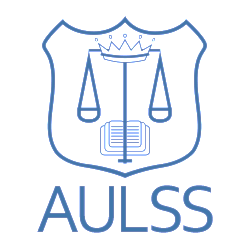Mind the Step - The Case for Universal Design
Written by Alexander Author and Edited by Divya Narayan
Universal design (UD) is the intentional structuring of an environment so that it is accessible and usable to as many people as possible[1]. It offers insight into how our environments serve us, but also forces us to question how they don’t serve the most vulnerable.
UD has seven core principles. The principles of flexibility, intuitive use and low physical effort[2] are potentially applicable across a wide range of scenarios, although greater understanding of the principles are needed.[3] The benefits of UD not only include the physical
aspects of how people with disabilities interact with the world but impact the social aspects of life too. In the aptly named social model of disability, people with disabilities (PwD) are not constricted by their diagnoses, but rather by implicit attitudes and biases[4]. Removing these barriers creates equality and offers people with disability more independence, choice, and control[5].
However, these ideals have yet to manifest. In the Guardian’s Disability Diaries article series, five disabled individuals with various conditions gave first-hand accounts of ableism, notably inabilities to access transport and buildings, feeling judged by colleagues and clients in the workplace for leaving early (plus fears of further questioning of abilities by senior management)[6]. People with disabilities are more likely to suffer higher rates of mental illness[7], report feeling lonelier and have less social connectedness.[8]
While the UD presents advantaged to improving accessibility and recognition of PwD, tackling ableism will require a multifaceted, systemic restructuring of social norms, and re-examining legal frameworks is one part of the solution.
Legal Frameworks
International law mandates full and effective participation in society (something which UD could help facilitate), respect for inherent dignity and autonomy and equal opportunity, among other principles[9]. The Disability Discrimination Act 1992 (Cth) goes further by not only differentiating between direct and indirect discrimination[10] (as well as contextual discrimination), but Division 2A gives the Minister the power to make disability standards on selected topics which it is unlawful to breach[11]. While both the Disability Discrimination Act 1992 (Cth) and Equal Opportunity Act 1984 (SA) are binding in SA, applicants are limited to one choice of forum and one remedy for discrimination they may face.[12]
While the UK Supreme Court ruled that wheelchairs do have priority over prams in designated spaces on public buses[13] clarity around legal procedure, ADR, and remedies is needed in South Australia as Part 8 of the Equal Opportunity Act is convoluted. This is reflective of broader social, political and additional barriers that PwD face in living fulfilling, dignified and meaningful lives.
Conclusion
As someone with a disability, I have spent my life trying to live in a world that isn’t designed for me. There have been instances where I have not had access to toilets at university because it was outside of working hours. The inability to access the lifts to get to a disabled toilet on an upper floor meant I was forced to find an alternative that was humiliating and made me feel sub-human.
In 2016, I attended a Macklemore & Ryan Lewis concert at the Adelaide Entertainment Centre, and I wanted to head to general admission. One of the staff told me that I couldn’t because ‘other disabled people would complain’. While I did eventually get there with the help of two mates (and I was able to access Ligertwood building second-floor toilet) these two examples show why UD is critical for greater social participation.
As the world adapts and changes to the growing needs of society, it is important to consider people who are often cast onto the fringes of society for having issues that are deemed too complex or difficult to deal with. The above highlights some of the possible solutions and considerations that every person and institution should consider in order to be fully inclusive of PwD.
[1] National Disability Authority, Centre for Excellence in Universal Design, ‘What is universal design?’ (2020), <https://universaldesign.ie/What-is-Universal-Design/>.
[2]National Disability Authority, Centre for Excellence in Universal Design, ‘The 7 Principles’ (2020), https://universaldesign.ie/what-is-universal-design/the-7-principles/.
[3] Rob Imrie (2012) Universalism, universal design and equitable access to the built environment, Disability and Rehabilitation, 34:10, 873-882, DOI: 10.3109/09638288.2011.624250.
[4] People with Disability Australia ‘The Social Model of Disability’ (2018), < https://pwd.org.au/resources/disability-info/social-model-of-disability/>.
[5] Australian Federation of Disability Organisations ‘Social Model of Disability’ (2021), < https://www.afdo.org.au/social-model-of-disability/>.
[6] Frances Ryan (writing for The Guardian), ‘What is life really like for disabled people? The Disability Diaries reveal all’ (15th November 2017), <https://www.theguardian.com/inequality/2017/nov/15/whats-life-really-like-for-disabled-peopld-disability-diaries-reveal-all>.
[7] Approximately 32% of people with a disability reported affective mood disorders such as anxiety or depression, which rises to 36% if the disability is profound. This is compared to 8.7% of the general population according to 2019 ABS statistics. Australian Institute of Health and Welfare ‘Health of people with a disability (23rd July 2020), < https://www.aihw.gov.au/reports/australias-health/health-of-people-with-disability>.
[8] Stephen J. Macdonald, Lesley Deacon, Jackie Nixon, Abisope Akintola, Anna Gillingham, Jacqueline Kent, Gillian Ellis, Debbie Mathews, Abolaji Ismail, Sylvia Sullivan, Samouka Dore & Liz Highmore (2018) ‘The invisible enemy’: disability, loneliness and isolation, Disability & Society, 33:7, 1138-1159, DOI: 10.1080/09687599.2018.1476224.
[9] A full list of CRPD principles can be found in the preamble- see Convention on the Rights of Persons with Disabilities, date opened for signature on 30 March 2007, Australian Treaty Series, entry into force 16th August 2008, Preamble.
[10] Disability Discrimination Act 1992 (Cth) ss 5-6.
[11] Ibid Div 2A.
[12] LexisNexis, Halsbury’s Laws of Australia, vol 80, 7th March 2018, Part II, section 1, subsection C, < https://advance.lexis.com/document/documentlink/?pdmfid=1201008&crid=7bb92f74-9e31-405b-b517-7b487045b609&pddocfullpath=%2Fshared%2Fdocument%2Fanalytical-materials-au%2Furn%3AcontentItem%3A58VT-05V1-JPP5-222H-00000-00&pdpinpoint=_80-215&pdcontentcomponentid=120140&pddoctitle=%5B80-215%5D-%5B80-640%5D&pdproductcontenttypeid=urn%3Apct%3A167&pdiskwicview=false&ecomp=s3y3k&prid=0e65ca87-19b1-4c1c-85aa-c26249b37af9>.
[13] FirstGroup Plc (Respondent) v Paulley (Appellant) [2017] UKSC 4.
